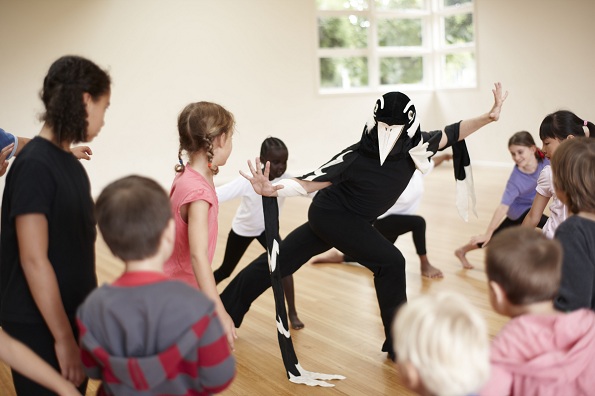The Australian Ballet’s Out There– Ballet in Schools
By Grace Edwards
For decades the dance community has fought hard to get dance into schools, though the benefits of early arts exposure have proven frustratingly hard to quantify to others. A growing body of research overseas and locally, however, has begun to back our well-worn claims, a fact not lost on the Australian Ballet, which launched its ‘Out There – Ballet in Schools’ programme earlier this year.
The philosophy of Out There is simple. By removing the financial and geographical obstacles to accessing a quality dance education in schools across Australia, the AB hopes to promote children’s thinking skills, reasoning and understanding through dance, as well as the concrete skills of coordination, musicality and memory retention. ‘Ballet French’ will also serve as a novel introduction to language skills for kids involved in the programme.
Launched at St. Kilda West Primary School in Victoria earlier this year, Out There puts students between the ages of five and twelve through a series of interactive workshops led by a specially-trained Dance Education Ensemble of two male dancers, Patrick Meessmann and Alexander McKinnon and two female dancers, Polly Hilton and Hannah Beer.
To round out the experience, students will be handed Out There activity booklets filled with challenges such as word searches, dance vocab and drawing competitions to encourage a curiosity about all areas of dance. An interactive section on the website of Out There sponsors, the National Australia Bank (nab.com.au/ballet) will allow the children to contact the four members of the Dance Education Ensemble and share aspects of their Out There experience with each other online.
 The Australian Ballet’s Out There may appear straightforward to veterans of dance; after all, haven’t there always been outreach programmes designed for kids?
The Australian Ballet’s Out There may appear straightforward to veterans of dance; after all, haven’t there always been outreach programmes designed for kids?
True enough, but it is the potentially nation-wide reach of the programme that sets it apart from those of smaller companies. As an externally managed dance curriculum of sorts, it may even pave the way for more permanent inclusion of dance in the school curriculum. In contrast to literature and drama, often taught as part of the English or literature curriculum, dance has traditionally been confined to the physical education department where the creative potential of dance has generally been ignored.
Dance has therefore always stood to gain much from the growing body of arts-based research. Though much of it has focused on the arts in a broader sense, the overwhelmingly positive results of such studies have got mainstream educators talking. Local studies include one conducted in Queensland in 2004 which found that children believed the arts strengthened their learning in other areas. Parents, teachers and community leaders shared their views. A related study in Northern Territory entitled ‘A Pedagogy of Trust’ (Tait, 2004) also showed that Indigenous (English as a second language) students achieved significant improvements in their mathematical age and reading after receiving basic music lessons for a year. Most recently, a paper released by the Australian Council for Educational Research authored by Sydney University academic Robyn Ewing cited overseas studies underlining the superior academic performance of students who received an arts education.
Dancers have always known that dance requires brains as much as brawn, and increasingly they will have figures to prove it. Meanwhile, iniatives like the Australian Ballet’s Out There programme ensure that a new generation will get the opportunity to discover the abundant joys that dance has to offer.
To download the online booking form please visit http://ballet.nab.com.au/cms-out-there-overview/index.phps and to view a short overview of the program see http://ballet.nab.com.au/cms-news/index.phps

















